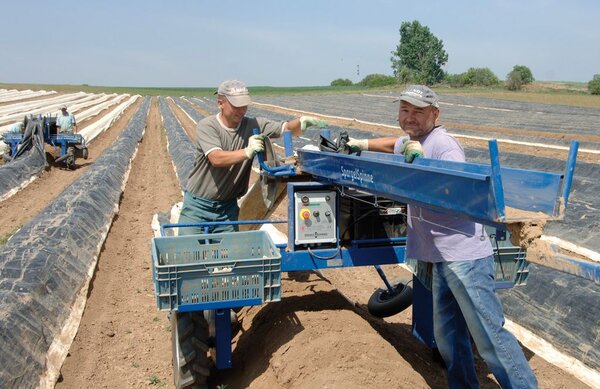Expertise
Impact of the minimum wage
Hildegard Garming | 16.06.2022
The minimum wage has brought significant wage increases for employees, but also posed new challenges for horticultural and agricultural companies.
In 2015, scientists from the Thünen Institute conducted a nationwide survey on the effects of the minimum wage in horticultural and agricultural farms. The focus was on cost effects, adaptation strategies (e.g. changes in production systems) and practical problems in the implementation. The aim was to obtain an initial assessment after the Minimum Wage Act came into force on January 1, 2015.
In addition to the wage level, the respondent farm managersperceived increasing bureaucracy as a major problem. The main issue here is the high administrative burden for documentation of working time, but also a lack of flexibility inregulations of the Working Hours Act.
According to the survey respondents, many seasonal workers are dissatisfied with the statutory limit of 48 hours per week, as they want to earn as much as possible during their short stay in Germany. Respondents also saw difficulties in the implementation of incentive wage systems and wage differentiation perceived as fair by the workers.
As an adaptation to the minimum wage, farmers try to improve labour productivity and thus increase expectations on the work performance of the workforce. This will affect job opportunities for individuals with lower performance. In addition, there will be even more investment in mechanization than in the past to reduce the use of hired labor in the long term. Various farms are also planning to reduce areas under labor-intensive crops. In the future, crop specific labour requirements will become a more important determinant when deciding which crops to be cultivated.
Wages will gradually increase to at least €9.10/hour in the period up to 2018. In the production of fruit and vegetables, this will lead to a significant increase in production costs in many cases. For example, model calculations based on typical farms showed that, compared with 2014, production costs for apples will rise by around 7%, for asparagus by 12% and for strawberries by 16%. To what extent this can be passed on to consumers or lead to more imports remains to be seen.
The results are summarized in Thünen Working Paper 53 (in German, published 2016). They reflect initial assessments and expectations of farm managers; concrete analyses based on statistical data will only be possible in the coming years.







